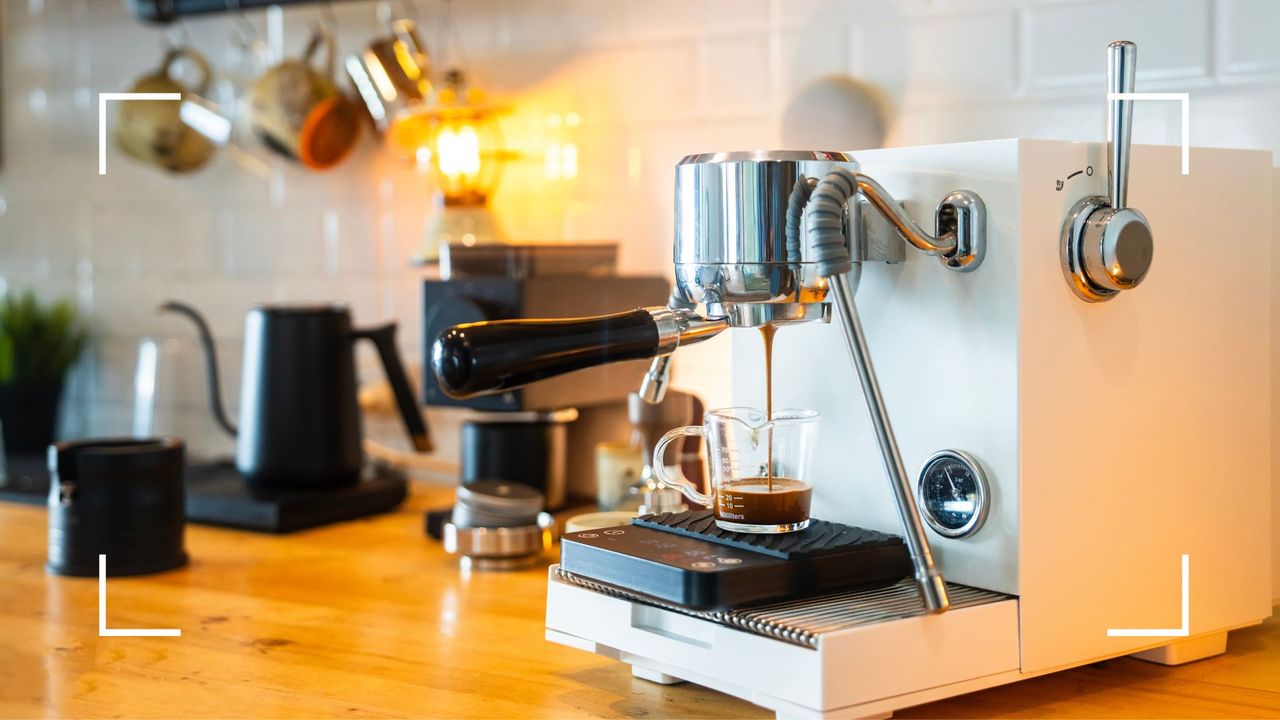
Knowing how to clean a coffee machine thoroughly and correctly is the most important knowledge for any coffee aficionado. Not only does it help your machine perform better for longer, but it also keeps your morning cups tasting delicious.
When you have one of the best coffee machines on your side, getting through the day seems that much more possible. Once you've nailed where to place your machine, the only thing you may be drawing a blank on is how best to clean it and what method is correct for your type of coffee machine.
We spoke with both cleaning and coffee experts to gain professional advice on achieving a spotless and safe clean for all coffee machines. From bean-to-cup appliances to pod designs, we have every coffee machine covered.
How to clean a bean-to-cup coffee machine
Even someone who knows all the expert cleaning hacks can be confused when it comes to the best way to clean a bean-to-cup coffee machine. With all the different parts and attachments that come with such a model, choosing the appropriate technique in itself can become quite a task.
The experts have recommended a method to guarantee you a perfect cup of coffee.
Here's what you'll need:
- Mild-dish soap
- Microfibre cloths
- Descaling solution
- Soft brush or sponge
- Multi-purpose spray
RRP: £5.29 | This is a hero product every cleaner should have in their home, especially when it comes to stain removal. This eight-pack will make any clean-up job that much easier, and having more than one on hand will have you prepared for even the biggest messes.
RRP: £16.29 | This descaler is compatible with most popular coffee machine brands and is suitable to use on pod, espresso and bean-to-cup machines. You get two bottles, so plenty to keep you going.
RRP: £4 | Cleaning the exterior of your machine with a high-quality, non-toxic multi-purpose spray will give you peace of mind as it kills bacteria and cuts through grease without unpleasant chemicals
1. Check the manufacturers instructions
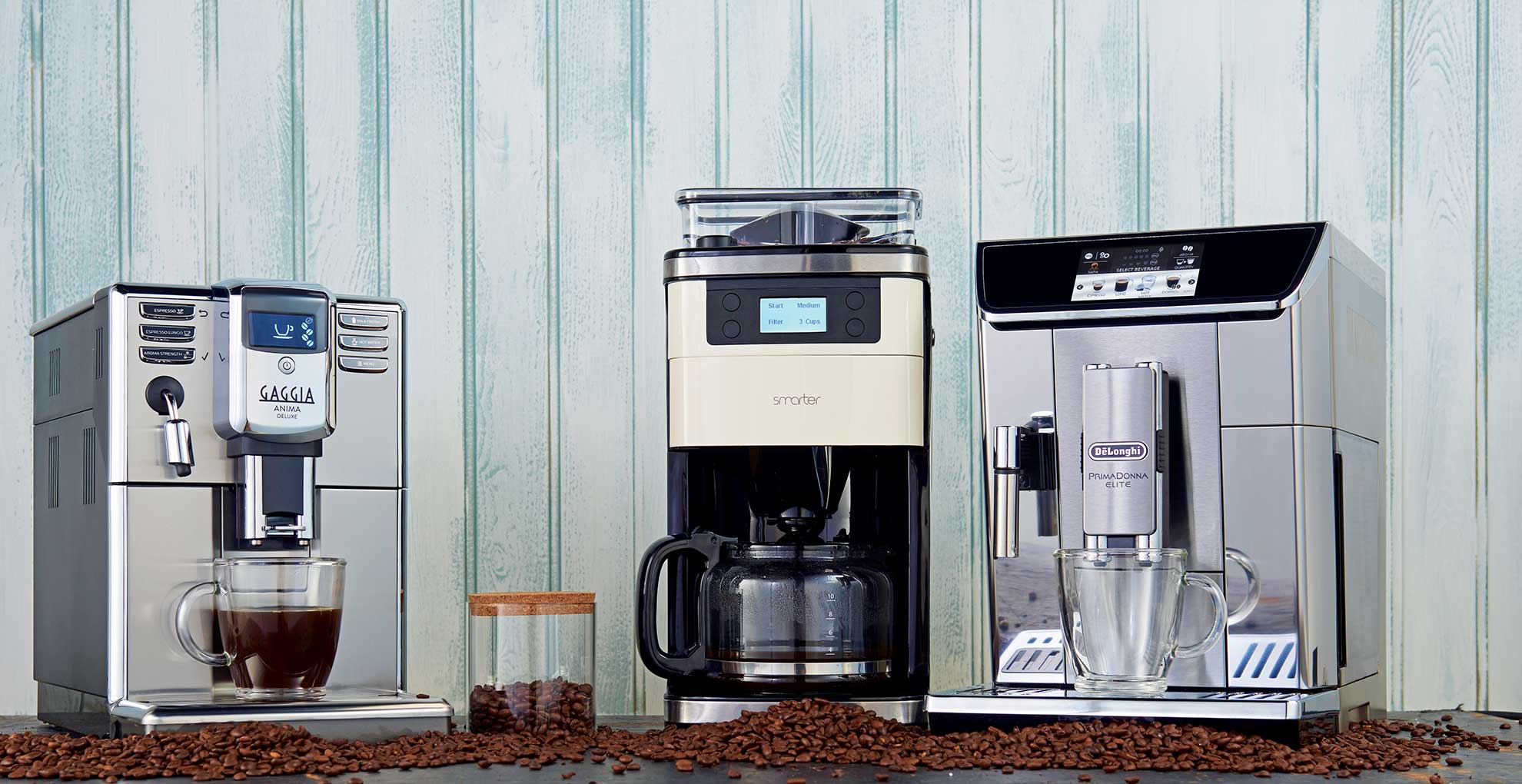
Before you rush through your quick kitchen cleaning routine and give your coffee machine a speedy once-over, it's a good idea to read the manufacturer's instructions for cleaning and, more importantly, for warnings of what not to do.
"Most bean-to-cup machines have similar cleaning needs, but it’s best to check any brand-specific instructions first. However, if you do not have access to instructions, this 6-step guide gives a thorough clean that works for most machines," says Smol's cleaning expert Catherine Green.
2. Remove detachable parts
No matter what model you have, it will have external detachable parts that you can remove easily. Catherine suggests removing all of these, including the drip tray, water tanks and brew group, before you even get started on cleaning any part of the machine.
She explains that taking these external pieces will make them much easier to clean and also allow you to empty the coffee grounds container, as well as any other large spots of build-up on the machine. Similarly to how you deep clean your house, moving the furniture often reveals the dirtiest spots that need tackling.
3. Wash detachable parts
Once these parts have been taken off, you can give them a good clean. Be careful of more delicate areas on the parts or anything made of weaker materials. Being gentle on this step is crucial for your machine and its running.
"Wash the parts you've removed with warm soapy water; a mild washing-up liquid is perfect for this. Once you've cleaned them, give the parts a rinse with clean water and dry them completely with a clean cloth," says Catherine.
It's not recommended you start cleaning with vinegar or baking soda; keeping to a mild dish soap will ensure all parts aren't corroded or left with an undesirable smell or taste.
4. Descale the machine
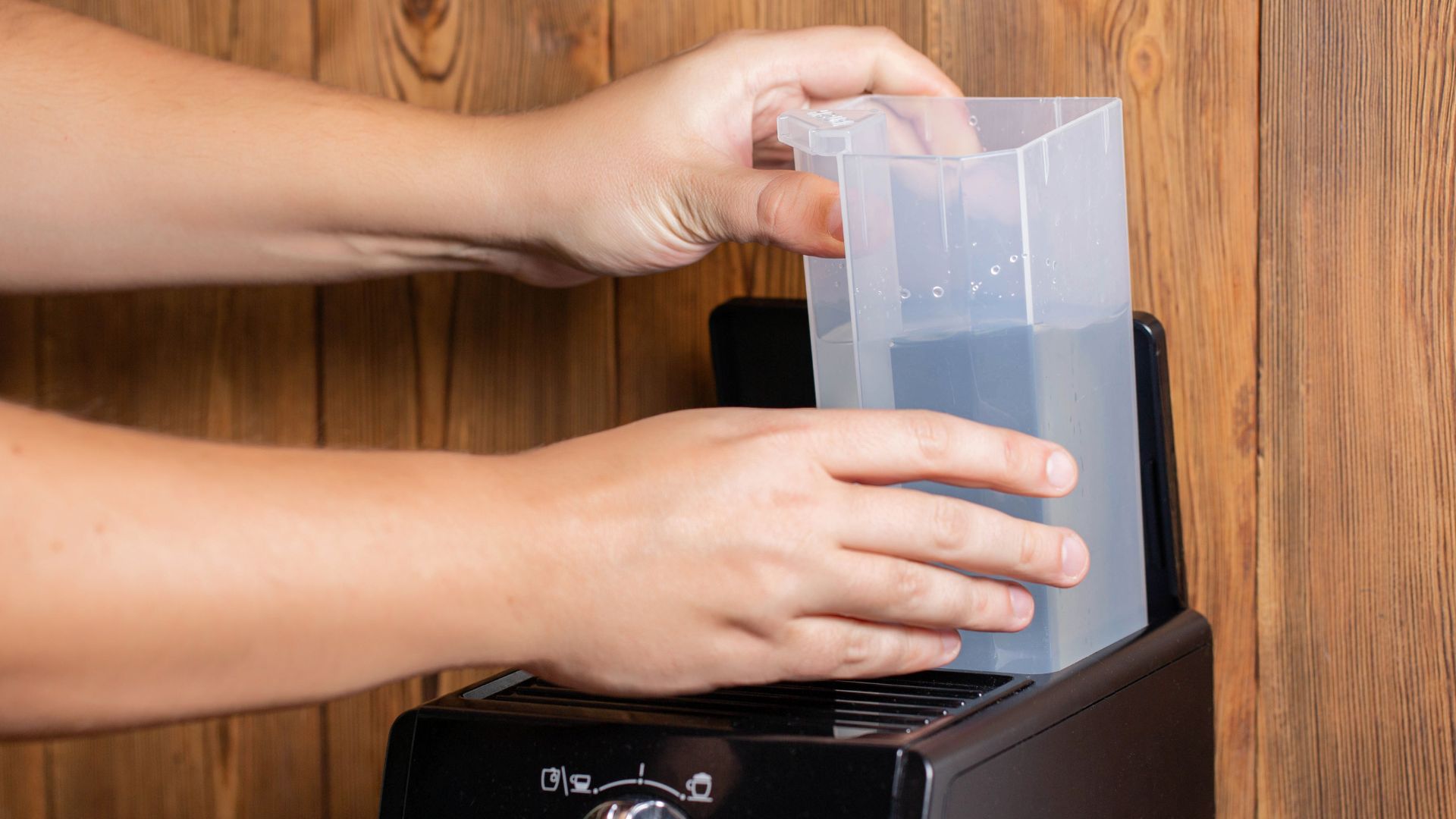
Whilst the external parts are drying, you can start to work on descaling the machine. Unlike how to descale a kettle, it's best not to turn to any DIY methods or cleaning substitutes.
"To descale the machine (many will tell you when they need this), fill the water tank with a descaling solution as recommended by your machine manufacturer and run a descaling cycle. Then rinse the water tank with clean water and refill it," suggests Catherine.
If you're not sure when your coffee machine needs to be descaled, then there is more information on that below.
5. Gently clean internal components
Now that the external parts are clean and the internal system has been descaled, it's time for those delicate internal components. For this, you only need to use a soft brush or sponge to gently clean away any coffee particles or dust; the internal mechanisms shouldn't be too dirty as they're shielded.
Catherine points out it's especially important here to work with caution, as there will be delicate parts, so move more slowly to ensure nothing is damaged.
6. Reassemble and wipe
With every inch of the machine tended to, it's time to reassemble all the external and internal parts so that your machine is looking back to its usual self. But of course, this time sparkling clean.
After reassembly, Catherine recommends giving the expert a wipe-down with a clean cloth and multi-purpose cleaner. She says, "You can then do a test run to ensure all is working well."
And like that, you have a clean coffee machine ready once more to provide you with that caffeinated nectar! Why not add this method to your step-by-step guide for cleaning your kitchen quickly and easily?
How to clean a pod coffee machine
When it comes to a pod machine, there are some warning signs that you need to give it a deep clean. Catherine says, "If your coffee pod machine is dispensing too slowly or the pod isn’t releasing into the capsule drawer, it might be time for a clean. Most manufacturers recommend a good clean once every 3-6 months."

1. Remove all external parts
Similar to how to clean the bean-to-cup machines, the first thing to do is remove all external parts and discard any used pods that may still be stored in the machine.
"Remove the water tank, drip tray and cover and any holders so they can be washed in warm soapy water using washing up liquid. Rinse, dry and replace them once clean," says Catherine.
Unlike bean-to-cup machines, the pod models are often a little more sturdy and have fewer intricate parts to them, which makes the cleaning process a little easier.
2. Brush away grinds
Whilst you may have already found ways to use coffee grounds in your garden, there will be some leftover grounds hanging around on your machine and internally. These rogue grounds can build up over time and cause issues with your machine, whilst also adding to the overall dirtiness.
Catherine recommends taking a clean toothbrush and gently removing all the stuck grinds that are in the capsule insertion space. It's best to take your time here, as you don't want to push the grinds further in.
RRP: £9.99 | This kit makes cleaning your machine so much easier, with it's bristle brushes you can get into those tight spots and remove all the build-up and ground coffee.
3. Rinse out the system and descale
Once the majority of the external dirt and leftover grinds have been taken care of, it's time to tackle the internal workings.
"Empty the water tank and remove the water filter (if there is one) before filling the tank up with some water and a manufacturer-approved descaling solution," explains Catherine. "Put a small bowl on the drip tray and run your machine as if making a drink. Repeat this until your machine asks you to add more water. Empty the bowl as you go."
Why not collect the leftover water for your garden? It might not be rainwater harvesting exactly, but it'll have some diluted nutrients from the coffee and is a great way of reusing water you'd otherwise throw out.
4. Clean water tank
Most, if not all, pod machines will have a removable plastic water tank attached to them; whether that's located on the back or side, it's important to clean this tank regularly.
Simply rinse out the water tank, and clean it with warm soapy water if necessary, then Cathrine recommends repeating the previous step with clean cold water to clear out any cleaning solution residue from the machine.
5. Wipe exterior
With the internal capsule insertion space, water tank and descaling done, you can reassemble any external parts onto the main body of the machine and give it a thorough wipe-over with a multi-purpose spray and microfibre cloth.
How to clean an espresso machine
If you're a true coffee fiend, you may have an espresso machine sitting in pride of place in your kitchen, but is it showing its daily use a bit too much? Not to worry. Cleaning an espresso machine is extremely important if you want the best quality in every drink.
Here's what you'll need:
- Clean toothbrush
- Cleaning detergent
- Microfibre cloth
- Mild-dish soap
- Descaling solution
- Multi-purpose spray
1. Clean the portafilter
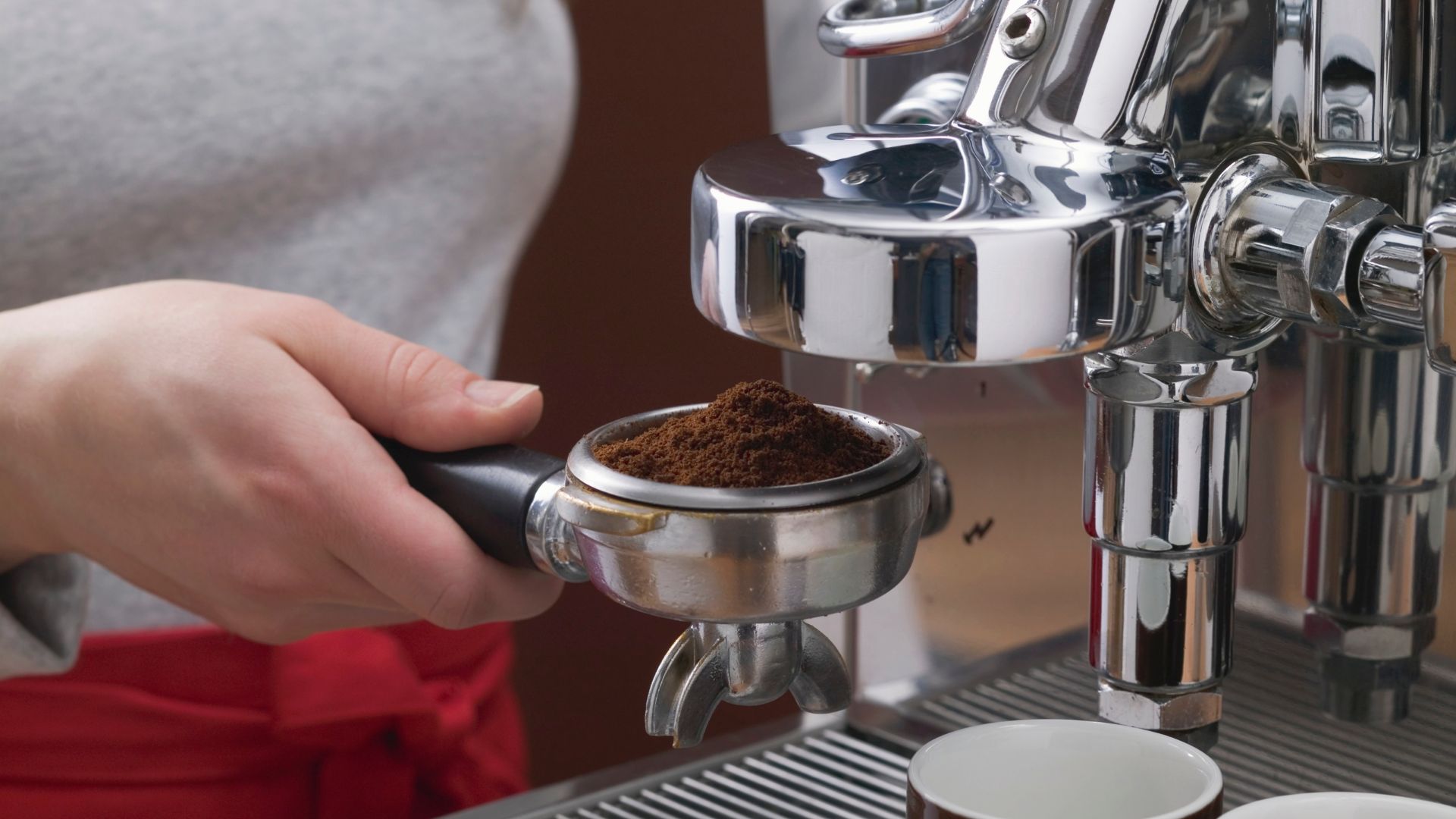
Unlike other coffee machines, espresso models have a portafilter, which is a device with a handle that your machine pours water through. It holds the portafilter basket, which is where your coffee grounds are, meaning it quickly gets dirty.
"You can start cleaning the espresso machine by flushing the group head. Run the espresso machine with just water to flush out any remaining coffee grounds," says Polya Petrova, a cleaning and home improvement professional at Fantastic Services.
After that, clean the portafilter and basket. To do this, remove the portafilter and gently clean it out with warm, soapy water. You can use a soft brush or toothbrush to clean the filter basket, which will ensure you get into any hard-to-reach places.
2. Clean away coffee residue
Now that the portafilter is taken care of, the next step is to tackle the group head and gasket to remove any coffee residue or oils.
Catherine says, "If your machine has a backflushing feature, use a blind portafilter basket and insert it into the portafilter. Add the recommended amount of cleaning detergent to the basket and run a backflushing cycle according to the machine's instructions. Repeat this process with clean water to rinse."
When it comes to cleaning detergent, we'd recommend using this Urnex Cafiza Espresso Machine Cleaning Powder from Amazon for £11.99. It will make quick work of any residue stuck in the group heads, valves and machine lines.
RRP: £14.99 | This brush is designed specifically for cleaning the grouphead of your espresso machine. It's recommended you dip it in cleaning solution and rotate the brush to properly remove residue from the grounds.
3. Wipe steam wand
Whilst keeping on top of wiping your steam wand could be a daily habit to keep your house clean and tidy, there is sometimes no avoiding a build-up. Catherine says you should start by wiping the wand with a damp cloth to remove any milk residue.
"If there's stubborn buildup, soak it in warm, soapy water, then scrub it off, washing up liquid is perfect for this," she explains.
4. Descale your machine
As was recommended with both bean-to-cup and pod machines, when you're cleaning, it's a great time to also run a descaling cycle. The method will depend on what brand of machine you have, which is why it's important to read your manufacturer's instructions and only use a solution they suggest.
No matter what solution you use, Catherine recommends filling the water tank with the solution and running a descaling cycle, then flushing the machine with clean water to remove any residue. Because, like when descaling a kettle, limescale can build up.
Experts generally agree that you should aim to descale your kettle every month so that it boils more efficiently, in turn reducing your energy consumption. The same could be said for your coffee machine in that case.
5. Clean tank and exterior
You might've guessed it, but once all the internal cleaning has been done, you can start on the outside of the machine. A wipe-down with a non-toxic multipurpose spray will have the machine looking its best and suitably ready for tomorrow's coffee fix.
FAQs
How often should you clean your coffee machine?
Sometimes it can be hard to decipher how often your appliances need a good clean, unlike how often you should clean your home; the dirt isn't always as easy to spot. Like how often you should clean an oven or clean a microwave, it all depends on how often you use the appliance.
"Often, people will keep the outside of their machine in tip-top condition and forget about the upkeep of the parts they can’t see. A regular cleaning schedule, which is tailored to the type of coffee machine you have and how often you use it is an essential part of any coffee connoisseur’s routine," says Mark Green, coffee expert at JURA.
There are some cleaning rules, however, that will apply to all coffee machines, no matter the type.
Mark explains, "You should be cleaning the milk system and drip trays daily, as well as replenishing the water tank to maintain a barista-quality coffee. Then a more thorough clean cycle should be carried out monthly to avoid coffee, milk residue and limescale building up inside your machine, which will impact the taste of your morning brew."
If you leave cleaning your machine, both internally and externally, for too long, it can cause residue build-up, which will cause clogging and blockages that will decrease water flow through the machine, making it less efficient to run and even shorten its lifespan.
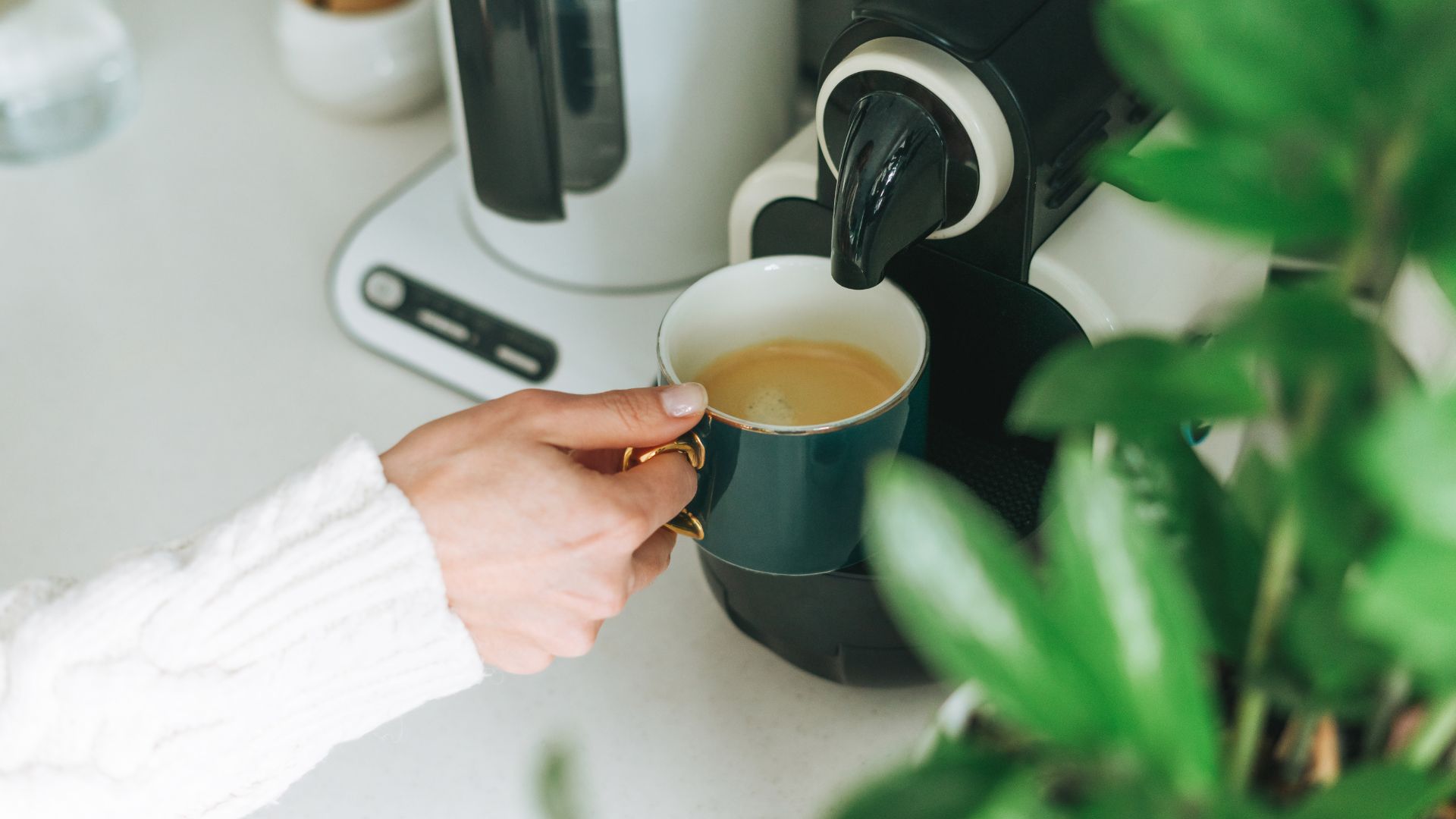
How do you know if your coffee machine needs descaling?
Aside from cleaning, how often should you be descaling your coffee machine? It's certainly not as regularly as you'd want to clean the water tank or wipe down the exterior, but there is an ideal time frame.
The easiest way to figure out if your machine needs a descaling is to taste the coffee it's producing.
"Your coffee may have a bitter, off or metallic flavour. In extreme cases, you may even see light-coloured deposits floating in your coffee. You may notice changes to your machine, such as a noisier operation, or it stops working altogether," explains Mark.
Some coffee machines may also alert you that the machine needs to be descaled, which is very handy.
What happens if you never clean your coffee machine?
If you've been too busy with your daily cleaning habits to invest some time into your coffee machine, you may not have cleaned it for quite some time.
“Neglecting your coffee machine will affect taste and can cause real mechanical problems in the worst cases. Old coffee residue can spoil future cups of coffee, while milk system blockages could become a hygiene issue," says Isabella Forgione, coffee machine expert at AO.com.
"Limescale buildup on your coffee machine’s heating element forces it to work much harder, which can also increase your energy bills and ruin your machine. It’s a far wiser idea to get into a good cleaning routine to prevent any damage from happening to your coffee machine,” she adds.
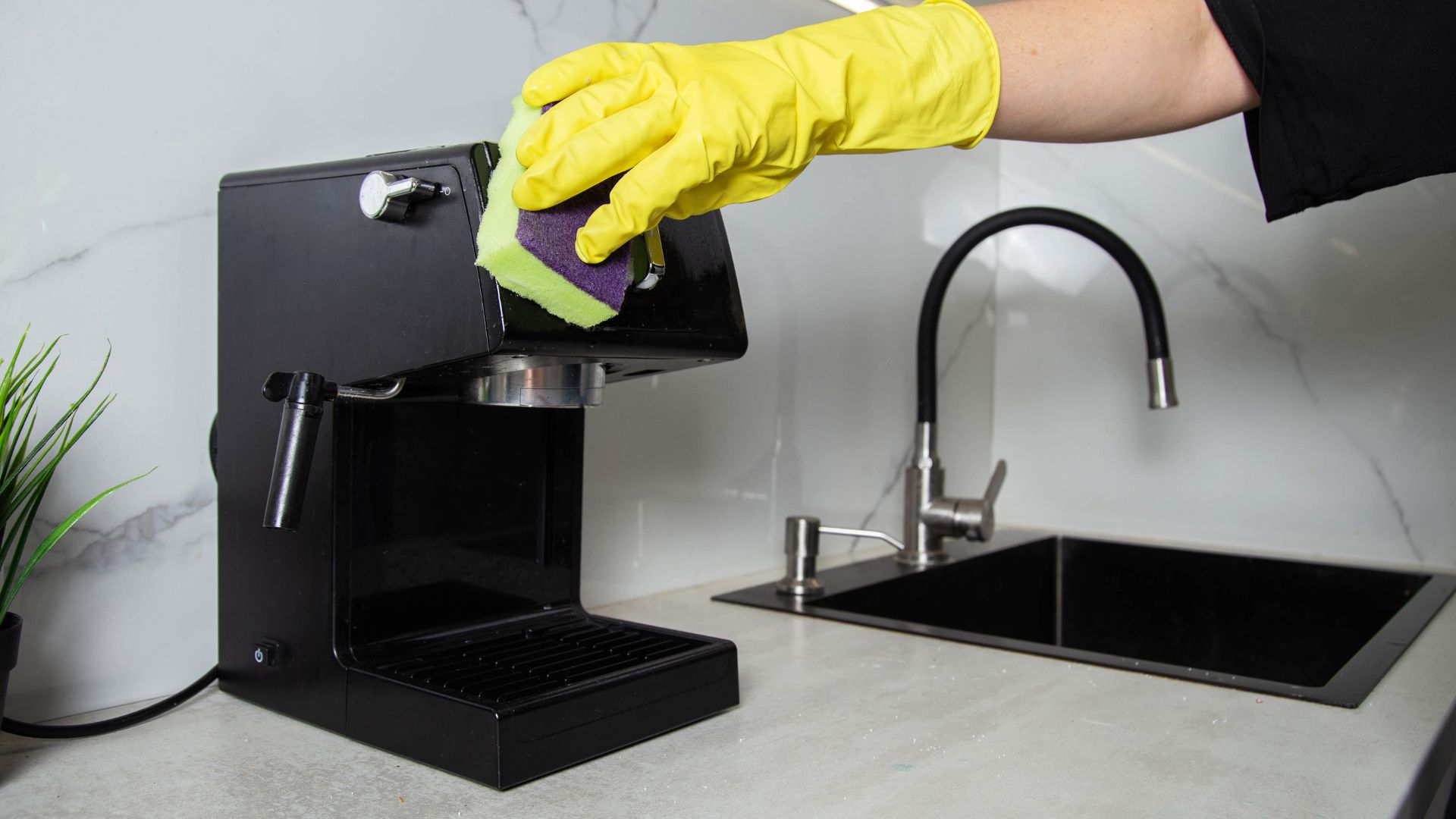
Should you use vinegar to clean a coffee machine?
When caught short and out of descaler, you may have wondered if you can clean your coffee machine with vinegar. Whilst this is recommended by some experts, ours say it's best to stay clear.
"I wouldn’t recommend using vinegar to descale your coffee machine, as some machine manufacturers may say this has voided your guarantee. They often prefer that you use their specifically recommended descaling solution. Vinegar residue can also linger in the machine, which could lead to an effect on the flavour of your coffee," says Catherine.
What are some common coffee machine cleaning mistakes?
With so many common kitchen cleaning mistakes to avoid, it's no surprise that it's easy to get your coffee machine wrong.
“Some of the most common coffee machine cleaning mistakes are easy to spot and even easier to rectify. The first is waiting until your coffees start to taste bad. By the time your coffee tastes bitter of wear this will mean its internal pipes are clogged with old beans and spoiled water. It’s a far wiser idea to clean your coffee machine a little and often to avoid this," says Isabella.
“Similarly, another mistake you can make is forgetting to clean the water tank, particularly if you have a warm kitchen. Water can spoil quickly if left unattended, so it’s important to clean your water tank once a week to prevent this from happening," she continues.
“An overlooked aspect of cleaning is forgetting to rinse after a descale. If you’re cleaning your coffee machine with citric acid, then this may sour future brews unless you remember to rinse after you’re finished. As a rule of thumb, whatever solution you use, double it with its rinse of water," finishes Isabella.
If you're looking for ways to make your kitchen smell good, staying on top of your appliance's cleanliness is one of the best places to start.
If you're still unsure how to tackle the big clean for your coffee machine, then it's always best to first check the manufacturer's recommendations. Past that, there aren't many mistakes you can make, other than cleaning with baking soda or vinegar, which will probably do more harm than good.







